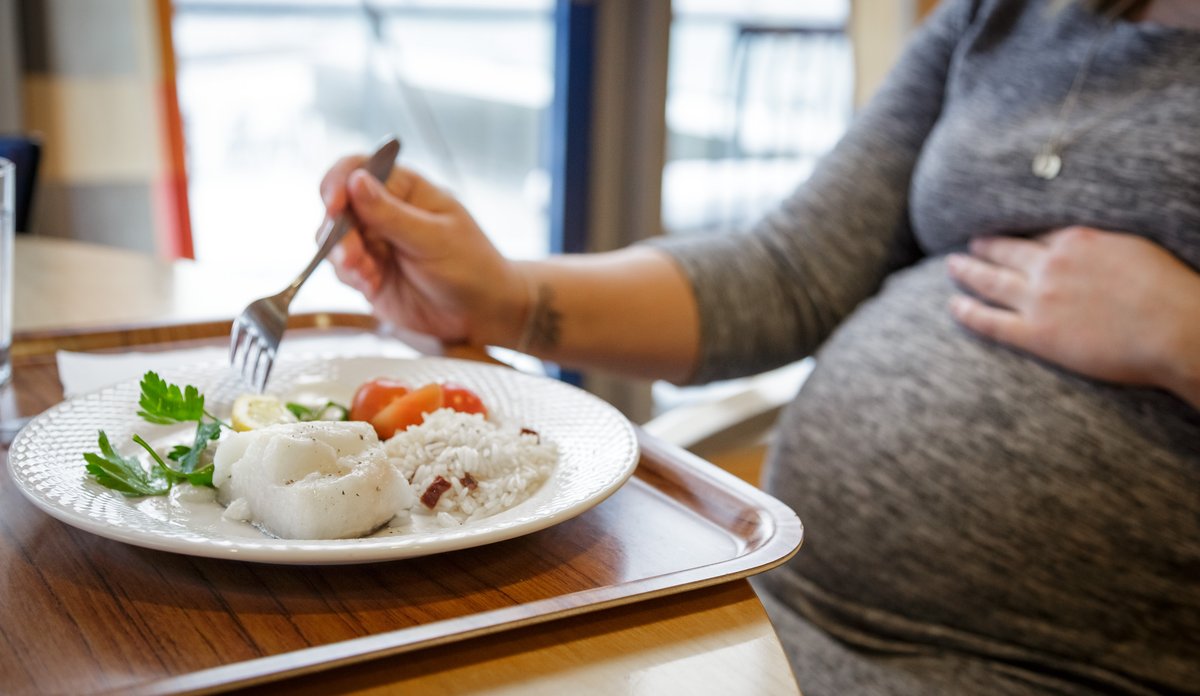Seafood and pregnancy

Lean fish contain large amounts of iodine. The element is important for the brain development in children and fetuses.
Photo: Erlend A. Lorentzen / Institute of Marine ResearchOmega-3 is shared by mother and fetus
The omega-3 fatty acid DHA is particularly important during pregnancy because the foetus draws on the mother’s reserves. So as not to run out, she needs a top-up.
In the final trimester of a pregnancy, and in the first years of life, our brain grows enormously. DHA is particularly important to brain development in infants.
References:
Braarud, Hanne Cecilie, et al. “Maternal DHA Status during Pregnancy Has a Positive Impact on Infant Problem Solving: A Norwegian Prospective Observation Study.” Nutrients 10.5 (2018).
Markhus, Maria Wik, et al. “Docosahexaenoic acid status in pregnancy determines the maternal docosahexaenoic acid status 3-, 6-and 12 months postpartum. Results from a longitudinal observational study.” PLOS One 10.9 (2015): e0136409.
Iodine is also good for the brain
Another important substance is iodine. This element is important to the production of the hormones triiodothyronine (T3) and thyroxine (T4). They regulate the metabolism of adults and are important to brain development in children.
Norwegian studies suggest that mild to moderate iodine deficiency in mothers may be associated with impaired brain development in their children. The possible consequences include impaired language development, behavioural problems and reduced fine motor skills.
Fish contains most iodine, but we are eating less of it
Few Norwegian food products contain iodine. Lean fish such as cod, haddock and saithe are very rich in iodine, but milk and dairy products are the biggest source of iodine in the Norwegian diet, since people are eating less seafood.
In 2018, researchers from 27 European countries sounded the alarm over iodine levels in newborns. (Also see: https://www.hi.no/hi/nyheter/2018/april/europeiske-forskarar-krev-strakstiltak-mot-jodmangel) Research shows that many Norwegians, and particularly young women, have low iodine levels. At the same time, we are eating less seafood.
Pregnant and breastfeeding women need extra iodine, because they need to cover their own needs and those of their child.
Many countries add iodine to the salt used in industrial food production in order to prevent iodine deficiency in the population. Adding iodine to Norwegian food products is being considered.
References:
Markhus, Maria, et al. “Maternal iodine status is associated with offspring language skills in infancy and toddlerhood.” Nutrients 10.9 (2018): 1270.
Dahl, Lisbeth, et al. “Iodine Deficiency in a Study Population of Norwegian Pregnant Women—Results from the Little in Norway Study (LiN).” Nutrients 10.4 (2018): 513.
Monitoring unwanted substances
Much of the waste produced by humans over the ages ends up in the oceans. As a result, seafood contains substances that are unwanted during pregnancy, such as certain heavy metals. (FIND OUT MORE ON SEPARATE WEBSITE)
The Norwegian health authorities have charged the IMR with monitoring the levels of those substances in seafood. (FIND OUT MORE ON SEPARATE WEBSITE)
The health authorities weigh up benefits with risks when providing dietary advice. This involves comparing the health benefits with the risks associated with the unwanted substances.
In other words, when they recommend eating a certain amount of seafood per week, it is because they believe the benefits outweigh the risks, based on our overall current knowledge. The Norwegian health authorities have special dietary advice for pregnant women. You can read the Norwegian Directorate of Heath’s advice on Matportalen.no: http://www.matportalen.no/rad_til_spesielle_grupper/tema/gravide/
Published: 27.03.2019 Updated: 31.05.2019

